In this dental case, Dr. Nizar Mujallid shows the results of replantation of a permanent avulsed tooth due to trauma which was extra-oral dry over 60 minutes. This is a 4 year follow up case.
Delayed Replantation
Introduction
- Replantation of permanent avulsed teeth with extra-oral dry time > 60 minutes.
- There is a considerable risk for pulp necrosis, root resorption, ankylosis, and subsequent infra-occlusion during adolescent growth.
- There are possible contraindications to tooth replantation. Examples are immunocompromised, severe congenital cardiac anomalies, severe uncontrolled seizure disorder, severe mental disability, severe uncontrolled diabetes, and lack of alveolar integrity.
Goals of Delayed Replantation
- To promote alveolar bone growth to encapsulate the replanted tooth..
- In these cases, the root should be prepared to be as resistant to resorption as possible (attempting to slow the osseous replacement process). By removing all remaining periodontal ligament and thus remove the tissue that will initiate the inflammatory response on replantation.
Prognosis
- Delayed replantation has a poor long-term prognosis.
- The periodontal ligament will be necrotic and not expected to heal.
- The expected eventual outcome is ankylosis and resorption of the root.
Technique for delayed replantation*
*according to the International Association of Dental Trauma (IADT) 2007
- Remove attached necrotic soft tissue with gauze.
- Root canal treatment can be done on the tooth prior to replantation, or it can be done 7-10 days later as for other re-plantations.
- Remove the coagulum from the socket with a stream of saline. Examine the alveolar socket. If there is a fracture of the socket wall, reposition it with a suitable instrument.
- Immerse the tooth in a 2% sodium fluoride solution for 20 minutes
- Replant the tooth slowly with slight digital pressure. Suture gingival laceration. Verify normal position of the replanted tooth clinically and radiographically.
- Stabilize the tooth for 4 weeks using a flexible splint. Administration of systemic antibiotics.
- Refer to a physician for evaluation of the need for a tetanus booster if the avulsed tooth has contacted soil or tetanus coverage is uncertain.
Patient instructions
- Soft diet for up to two weeks.
- Brush teeth with a soft toothbrush after each meal.
- Use a chlorhexidine (0,1%) mouth rinse twice a day for 1 week.
Follow Up
- Replanted teeth should be monitored by frequent controls during the first year (once a week during the first month, 3, 6, and 12 months) and then yearly thereafter.
- The clinical and radiographic examination will provide information to determine the outcome.
The case
Patient Details and history: (17/3/2016)
- 10 Year old.
- Male.
- Physically and mentally healthy.
- Trauma Cause: Fall down the stairs of the swimming pool.
Examination:*
- Avulsed teeth No. 8,9 ( upper central)
- Multiple lacerations
- No other injuries or fractures.
- Swollen lips.
Emergency Treatment:*
- Suturing.
- Medication: Antibiotics and pain control medication,
- Advised to come the next day to the dental department.
- The avulsed teeth were collected and advised the patient to keep it moist.
* Examination and emergency treatment on the 17/3/2016 was done at the emergency department by a General Dentist.
Dental Department Examination: (18/3/2016)
- Case Documentation was done: ( Photos / Panorama Radiography / periapical Xray of the traumatized area)
Diagnosis:
- Avulsion of teeth 8,9 which were (unfortunately it wasn’t kept moist but dry more than an hour)
- Intrusion of tooth no. 10
- Lateral luxation of tooth no. 7
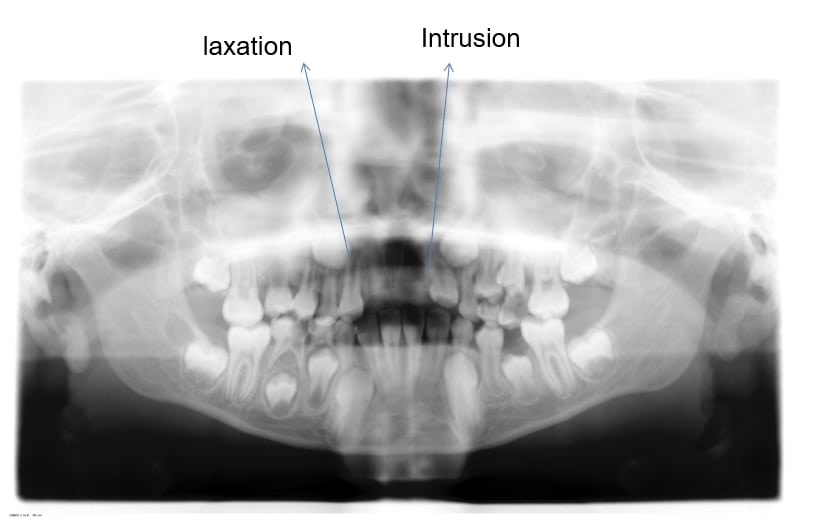
Treatment
Tooth Preparation #8,#9
- Removal of necrotic tissue and Periodium through cleaning and scaping.
- Root canal Treatment for both teeth
- Composite Filling
- Teeth soaked in 2% Flouride (NaF or APF) for 20 mins.
- The rationale for this fluoride soak is based on evidence that this procedure will delay but not prevent ankylosis.


Socket Preparation
- Removal of coagulum from the alveolar socket with saline.
- Examination and evaluation of the alveolar socket.
- If there is fractured of the socket wall, reposition it.

Teeth Replantation
- The replantation process should be done slowly with slight digital pressure.
- Splinting of the teeth for 3 months.

- Suturing the gingival laceration.
- verification of the normal position of replated teeth clinically and radiographically.


- Extra-oral laceration treatment.

Post Operative Treatment
- Continue taking antibiotics.
- A mouthwash of Chlorhexidine.
- Proper oral hygiene measures.
- Soft Diet.
- Instruct the patient that the splint will be removed within 3 months.
Follow Up
1 Week (26 March 2016)
- #7 is still vital even though it was luxated but was treated with splitting.
- #10 it was intruded but re-erupted back to normal position.

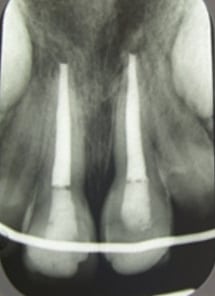
3 Week (16 April 2016)
- No Periapical Lesions or abnormalities

3 Months (24 June 2016)
- No Periapical Lesions or abnormalities
- Ankylosis is achieved ( clinically and radiography verified )

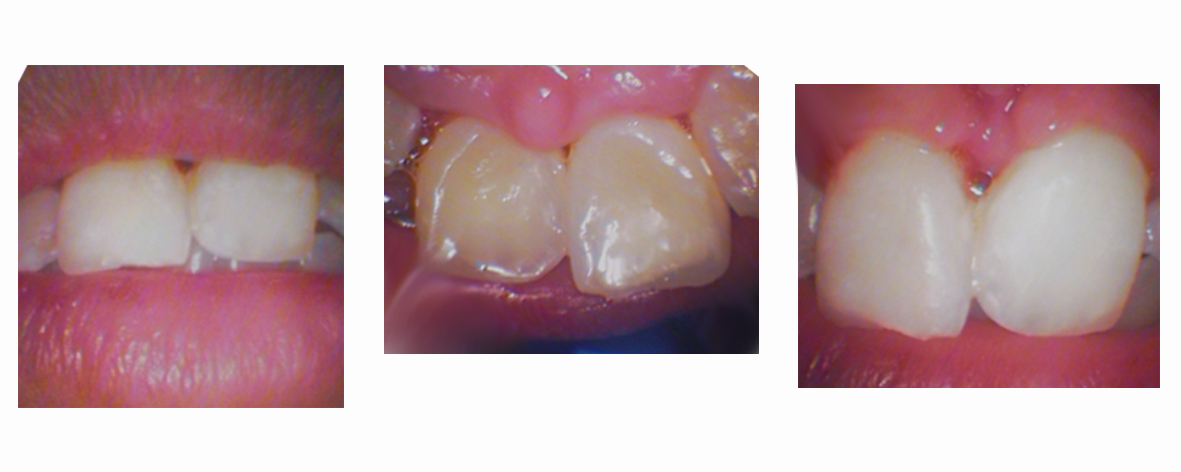
1 Year (21 April 2017)
- No Periapical Lesions or abnormalities
- Ankylosis of #8,#9
- No Resorption
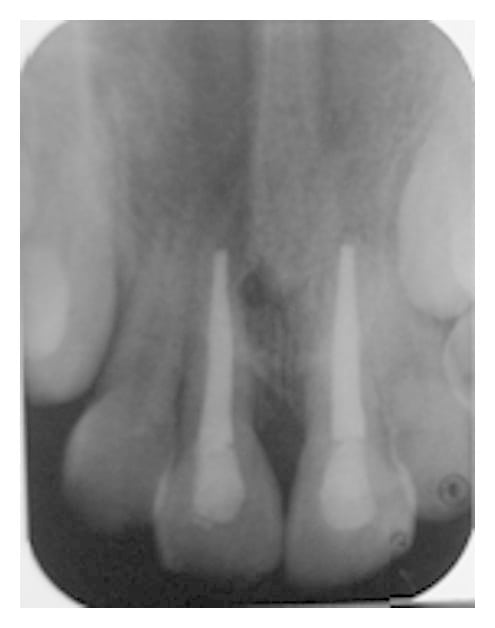
1 year and 8 Months (5 November 2017)
- No Periapical Lesions or abnormalities
- Ankylosis of #8,#9
- No Resorption
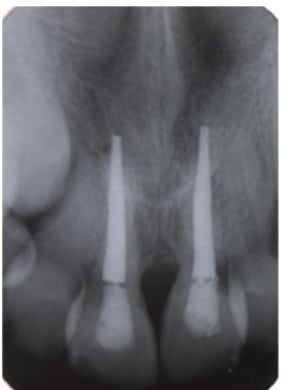

4 Years
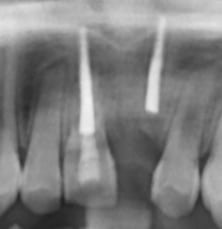
- Unfortunately, the patient disappeared and came back almost after 4 years with broken upper left central incisor due to another trauma resulted in crown fracture but the other central continued to be functioning.
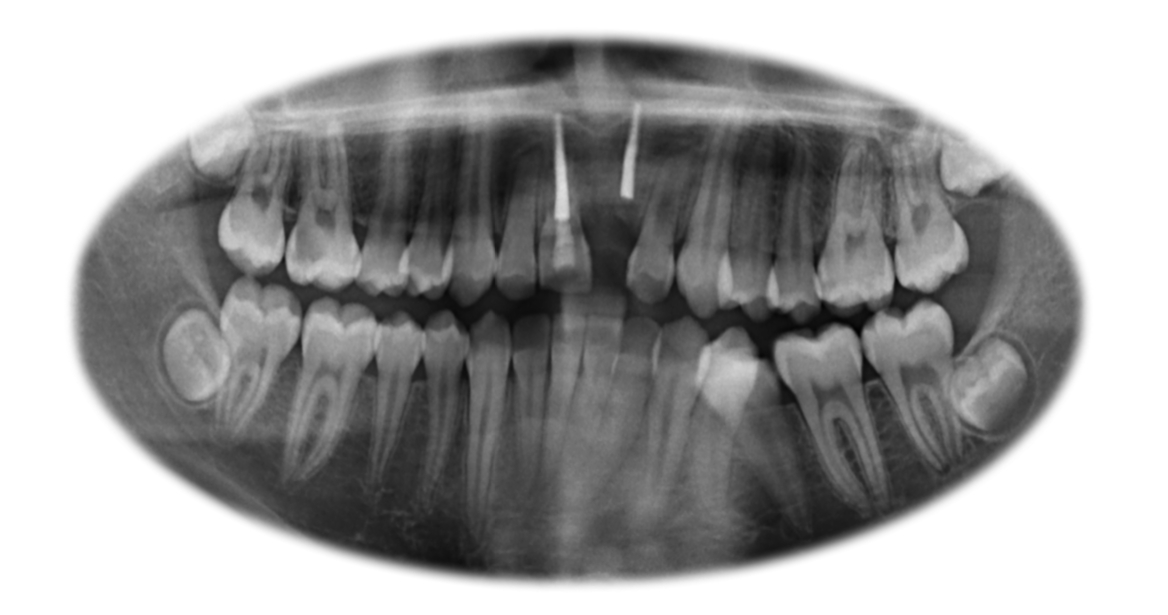
Radiographic Panorama
Conclusions
Even though complications like ankylosis and root resorption may be unavoidable, delayed replantation of the avulsed tooth may be a good alternative to prosthesis till the growth is completed due to the preservation of the alveolar bone and psychological benefit to the patient. Efforts should be made to educate and update children, teachers and parents regarding management of avulsed tooth at the accident site and also the dentists regarding its management in the dental office.
Sources
- www.endoexperience.com
- www.researchgate.net
- A case report by Dr. Nizar Mujallid, Delayed replantation of avulsed teeth with > 24h dry storage: a 4y follow up.

